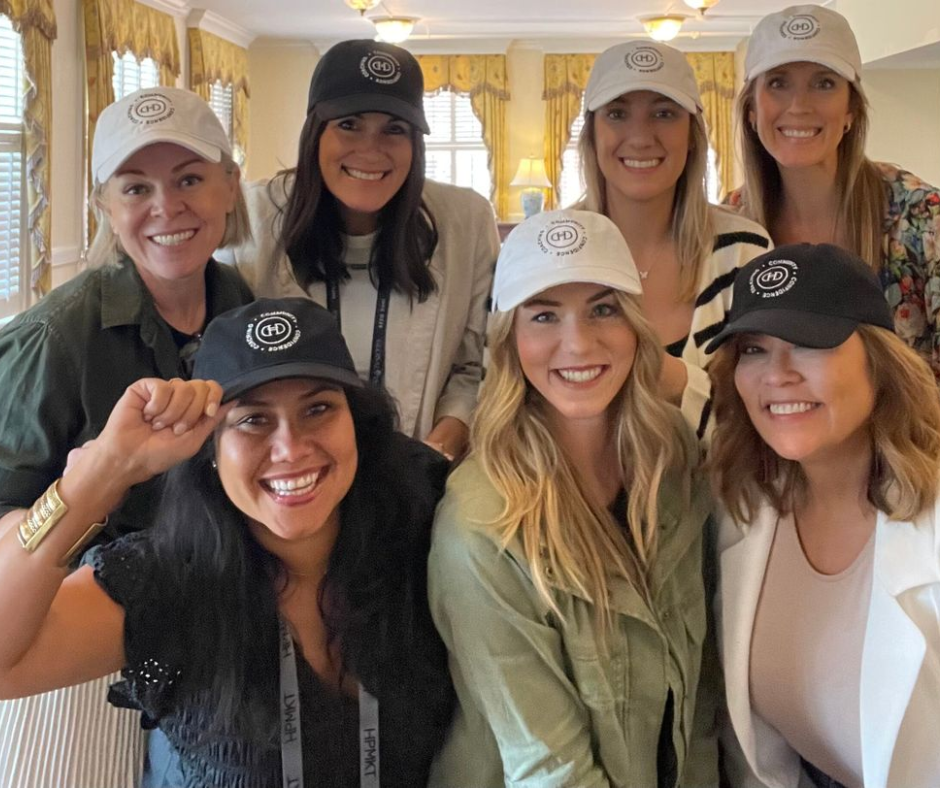
Navigating Relationships After Divorce: An Essential Guide
Summary
Reflection Questions
Journal Prompt
Oh, honey. Let’s talk about diving back into the dating pool after divorce. It’s like learning to ride a bike again, except the bike is on fire, and you’re wearing rollerblades. Fun times, right?
But here’s the thing: entering new relationships post-divorce isn’t just about dodging emotional potholes. It’s a journey that can be equal parts terrifying and exhilarating. Think of it as your very own rom-com, but with less meet-cute and more ‘meet-therapy’.
Now, I know what you’re saying. ‘I can barely navigate my new single-parent schedule, let alone a new relationship!’ Trust me, I get it. But here’s a little secret: navigating relationships after divorce is less about finding the perfect partner and more about rediscovering yourself. It’s like getting a second chance at your own coming-of-age story, just with more wrinkles and wisdom.
So, buckle up, buttercup. We’re about to embark on a wild ride through the land of post-divorce dating. We’ll cover everything from figuring out if you’re really ready to jump back in (spoiler alert: if you’re still ugly-crying to your ex’s playlist, maybe give it a minute) to navigating the brave new world of dating apps (swipe right for emotional baggage, anyone?).
Remember, this isn’t just about finding someone new to share your Netflix password with. It’s about growing, healing, and maybe even having a laugh or two along the way. After all, if we can’t find humor in the chaos of post-divorce dating, what’s the point?
Are You Ready to Date Again? Let’s Find Out!

Photo by Arina Krasnikova on Pexels.
So, how do you know if you’re emotionally prepared to swipe right on life again? Well, it’s not like there’s a ‘Relationship Readiness’ alarm that goes off. Instead, it’s about tuning into your emotional frequency and making sure you’re not just broadcasting on the ‘Lonely Hearts Club’ channel.
First things first, let’s talk self-assessment. And no, I don’t mean standing in front of the mirror asking, ‘Mirror, mirror on the wall, am I ready to date at all?’ It’s more about checking in with yourself emotionally. Are you still ugly-crying over your ex’s Facebook posts, or have you reached the ‘indifferent shrug’ stage? According to divorce experts, taking time to heal and process your emotions is essential before considering a new relationship.
Here’s a little self-awareness exercise I like to call the ‘Ex Test’: Can you think about your former spouse without wanting to either a) set something on fire, or b) drunk-text them at 2 AM? If you answered ‘yes’ to both, congratulations! You’re making progress. If not, well, maybe hold off on updating that dating profile for now.
But let’s be real – sometimes loneliness can make us as desperate as a caffeine addict at a coffee shop that’s run out of beans. It’s tempting to jump into a new relationship just to fill that void, but trust me, using another person as emotional spackle rarely ends well. It’s like trying to fix a leaky roof with chewing gum – messy and ultimately ineffective.
Instead, focus on rediscovering yourself. What makes you tick? What are your passions? Maybe it’s time to finally learn that interpretive dance routine you’ve always dreamed of (just maybe not on the first date, okay?). The point is, when you’re comfortable in your own skin, you’re more likely to attract someone who appreciates the real you – quirks, bad puns, and all.
Managing Expectations in New Relationships: A Delicate Dance

Photo by Pavel Danilyuk on Pexels.
Oh, the blissful early days of a new relationship! The butterflies, the stolen glances, the way everything seems drenched in a rosy glow. It’s intoxicating, isn’t it? But here’s the thing – there’s a crucial ingredient we often forget to add to this heady cocktail: realistic expectations.
Now, don’t get me wrong. I’m all for the fairy tale – heck, I still secretly hope my Prince Charming will show up on a white horse (or at least a reasonably priced sedan). But I’ve learned the hard way that managing expectations is like trying to wrangle a toddler in a candy store – tricky, but absolutely necessary if you want to avoid a meltdown.
So, how do we go about this delicate dance of hope and reality, especially when there are little ones involved? Well, buckle up, buttercup – we’re diving into the world of healthy boundaries and relationship realism.
Understanding Personal Limitations (Or, How I Learned to Stop Worrying and Love My Quirks)
We need to get real with ourselves. And I mean really real. Like, ‘yes, I snore like a chainsaw and yes, I have an unhealthy obsession with reality TV’ real. Because here’s the thing – if we can’t be honest with ourselves about our own quirks and limitations, how can we expect our partners to navigate them?
I remember when I first started dating after my divorce. I had this picture-perfect image of what my new relationship would look like. Spoiler alert: reality had other plans. It took a deep dive into understanding my own expectations to realize that I was setting myself (and my potential partners) up for disappointment.
So, take a moment. Reflect. What are your non-negotiables, quirks, and deal-breakers? Understanding these about yourself is the first step in setting healthy boundaries in any new relationship.
Partner Limitations (Or, How to Love Someone Without Trying to Change Them)
Now, let’s talk about the other person in this equation. You know, that wonderful, flawed, beautiful human you’re embarking on this journey with. Here’s a radical thought: they’re not perfect either. Shocking, I know.
The key here is to approach your partner’s limitations with the same grace and understanding you’d want for your own. Does this mean accepting bad behavior? Absolutely not. But it does mean recognizing that your partner is human, with their own set of quirks, fears, and yes, limitations.
Maybe they’re not great at remembering important dates. Or perhaps they have a tendency to leave wet towels on the bed (a personal pet peeve of mine). Whatever it is, the goal isn’t to change them, but to understand and work with these traits.
When Kids Are in the Mix (Or, How to Juggle Relationships and Tiny Humans)
Oh boy, here’s where things get really interesting. Adding children to the equation is like throwing a live grenade into your carefully constructed relationship expectations. Suddenly, it’s not just about you and your partner – it’s about creating a healthy, stable environment for little humans who depend on you.
Setting boundaries becomes even more crucial here. It might mean being clear about your parenting style, discussing how much involvement your new partner will have with your children, or establishing rules about sleepovers and PDA in front of the kids.
Remember, children thrive on consistency and clear expectations. By setting and maintaining healthy boundaries, you’re not just nurturing your new relationship – you’re modeling healthy relationship skills for your children. Talk about killing two birds with one stone!
In the end, managing expectations in new relationships, especially with children involved, is about finding that sweet spot between hope and reality. It’s about being honest, kind, and yes, sometimes brutally realistic. But trust me, the payoff – a healthy, sustainable relationship built on mutual understanding and respect – is worth its weight in gold (or, in my case, chocolate).
The Role of Communication in Building Trust

Photo by MART PRODUCTION on Pexels.
After the emotional rollercoaster of divorce, opening up to someone new can feel about as appealing as getting a root canal while skydiving. But here’s the thing – if we want to create meaningful connections again, we’ve got to dust off our communication skills and put them to work.
Now, I’m not saying it’s easy. I’ve had my fair share of awkward silences and foot-in-mouth moments while navigating the post-divorce dating scene. But I’ve learned that honest, open communication is the secret sauce to building trust in new relationships. It’s like laying the foundation for a house – without it, the whole thing is bound to come crashing down eventually.
So how do we become master communicators and trust-building ninjas? It starts with something deceptively simple: active listening. And no, I don’t mean nodding along while secretly planning your grocery list. I’m talking about truly tuning in to what your partner is saying, both verbally and non-verbally.
You’re on a date, and your potential new flame is sharing a story about their horrible boss. Instead of waiting for your turn to speak or trying to one-up their tale of workplace woe, really listen. Notice their body language, the emotion in their voice. When they finish, try reflecting back what you heard: “It sounds like you’re feeling really frustrated and undervalued at work. That must be tough.” Boom! You’ve just shown them that you’re present, you care, and you’re trying to understand their perspective. Trust points: unlocked.
But active listening is only half the equation. The other crucial ingredient? Honesty. And I don’t mean the brutal, no-filter kind that my Aunt Mildred specializes in at family gatherings. I’m talking about the vulnerable, sometimes-scary act of sharing your true thoughts and feelings.
After divorce, it’s tempting to build walls and keep our cards close to our chest. But here’s a wild idea – what if we tried radical honesty instead? Share your hopes, your fears, your ridiculous obsession with 90s boy bands (no judgment here). When we open up, we invite others to do the same, creating a beautiful cycle of trust and intimacy.
Introducing Kids to a New Partner: A Delicate Dance of Hearts

Photo by Kampus Production on Pexels.
Oh, the joys of new love! The butterflies, the giddy smiles, the… wait, what’s that? A small human peeking around the corner with a mix of curiosity and trepidation? Ah yes, welcome to the wonderfully complex world of dating as a parent.
Now, I know what you’re thinking. ‘When’s the right time? How do I do this without scarring my children for life?’ Well, my dear readers, according to the relationship gurus (and some pretty solid research), the magic number seems to be somewhere between 9 to 12 months into your relationship. I know, I know – that’s practically a lifetime in the world of romance! But trust me, it’s worth the wait.
Why, you ask? Well, picture this: You introduce your kids to every Tom, Dick, and Harry you go on three dates with. Suddenly, your home is a revolving door of potential step-parents, and your kids are more confused than a chameleon in a bag of Skittles. Not ideal, right?
The Art of the Introduction: Less ‘Tada!’ More ‘Hey There’
When you finally decide it’s time for the big introduction, remember: this isn’t a Broadway show. There’s no need for jazz hands or a dramatic unveiling. Keep it casual, keep it cool. Maybe suggest a trip to the park or grab some ice cream. The goal is to create a relaxed environment where everyone can interact without feeling like they’re under a microscope.
And please, resist the urge to make your new partner the ‘fun one’ right off the bat. You know what I mean – the one who shows up with arms full of presents and promises of Disneyland trips. Your kids aren’t goldfish; they won’t be won over by shiny objects. Instead, encourage natural, genuine interactions. Let your partner and your kids find their own rhythm.
Emotional Rollercoaster: Buckle Up, Buttercup
Here’s a little secret: your kids might not immediately fall head over heels for your new partner. Shocking, I know. They might be confused, angry, or even a little scared. And you know what? That’s okay. These feelings are as normal as your neighbor Dave’s obsession with his lawn.
The key is to validate their feelings. Let them know it’s okay to feel whatever they’re feeling. Create a safe space for them to express themselves, even if what they’re expressing is that they’d rather eat broccoli for every meal than hang out with your new beau. (Okay, maybe that’s a bit extreme, but you get the idea.)
The Golden Rule: Kids Come First
Remember, your kids aren’t just supporting characters in your romantic comedy. They’re the stars of their own show, and it’s crucial to make sure they know that. Reassure them that no matter what happens, they’re your number one priority. No new partner is going to change that.
And don’t force it! If your kids aren’t ready for sleepovers or family vacations with your new partner, respect that. Rome wasn’t built in a day, and neither are blended families. Give it time, give it patience, and maybe give yourself a glass of wine. You’ve got this!
In the end, introducing a new partner to your kids is less about finding the perfect moment and more about creating a series of positive experiences. It’s about building trust, fostering understanding, and maybe, just maybe, creating a beautiful new family dynamic. So take a deep breath, trust your instincts, and remember: love is patient, love is kind, and love sometimes involves awkward family game nights. Embrace it all!
Overcoming Fear and Rejection: A Rollercoaster Ride Worth Taking

Photo by Tima Miroshnichenko on Pexels.
Putting yourself out there in the dating world after a hiatus can feel about as comfortable as wearing stilettos to a marathon. Trust me, I’ve been there, done that, and got the emotional blisters to prove it. But here’s the thing: that fear of rejection? It’s as universal as bad first date stories.
Deep breaths, my friend. Let’s talk about building that emotional bulletproof vest called resilience.
Resilience: Your New Best Friend
Resilience isn’t just a buzzword thrown around by life coaches and Pinterest boards. It’s your secret weapon in the dating battlefield. Think of it as your personal bouncy castle – no matter how hard you fall, you’ll always bounce back up.
But how do we build this magical quality? Well, according to the experts at eNotAlone, it’s all about reframing rejection. Instead of seeing it as a dead end, view it as a detour on your journey to find the right person. Each ‘no’ is just clearing the path for the ultimate ‘yes’.
Red Flags, Green Flags, and the Dating Traffic Light
Now, let’s talk about flags. No, not the kind you wave at a Grand Prix – I’m talking about the signs that tell you whether to proceed with caution or floor it in your dating journey.
Red flags are like those flashing lights at a railroad crossing. They’re warnings that something’s not quite right. Maybe they’re still hung up on their ex, or perhaps they think pineapple on pizza is acceptable (I kid, I kid… or do I?). Whatever it is, trust your gut. If something feels off, it probably is.
Green flags, on the other hand, are your go signals. They’re those little moments that make you think, “Hey, this person might actually be worth the emotional investment.” Maybe they remember your coffee order, or they laugh at your terrible puns. These are the signs that say, “Proceed with cautious optimism.”
Self-Esteem: Your Personal Cheerleader
Last but certainly not least, let’s chat about self-esteem. It’s like that friend who always tells you that you look fabulous, even when you’re sporting day-old pajamas and bedhead. Building and maintaining self-esteem is crucial when you’re back in the dating game.
Remember, your worth isn’t determined by someone else’s opinion of you. It’s determined by you. As the wise folks at Expansive Therapy put it, “We often attract the love we think we deserve.” So think you deserve the best, because guess what? You do.
At the end of the day, dating is a journey, not a destination. It’s about growth, self-discovery, and maybe a few awkward goodnight kisses along the way. So embrace the fear, learn from the rejections, and keep your chin up. Your person is out there, and they’re probably just as nervously excited to meet you as you are them.
Conclusion: Embracing New Beginnings

Photo by Gustavo Fring on Pexels.
Well, my darlings, we’ve traversed the rocky terrain of post-divorce dating together, and I hope you’re feeling a little more equipped to face the wild world of romance 2.0. Remember when we thought figuring out AIM chat was complicated? Ha! Child’s play compared to navigating Tinder after a decade-long marriage.
This journey isn’t just about finding someone new to share your Netflix password with. It’s about rediscovering yourself, embracing change, and growing into an even more fabulous version of you. (And trust me, you were pretty fabulous to begin with.)
We’ve covered a lot of ground, from dipping your toes back into the dating pool to setting healthy boundaries. The key takeaway? There’s no one-size-fits-all approach. Your path to new love is as unique as your collection of 90s scrunchies (which, by the way, are totally back in style).
As you embark on this new chapter, remember to be patient with yourself. Rome wasn’t built in a day, and neither is a post-divorce love life. Embrace the awkward moments, celebrate the small victories, and don’t be afraid to laugh at yourself along the way. After all, if we can’t find humor in the absurdity of modern dating, what’s the point?








